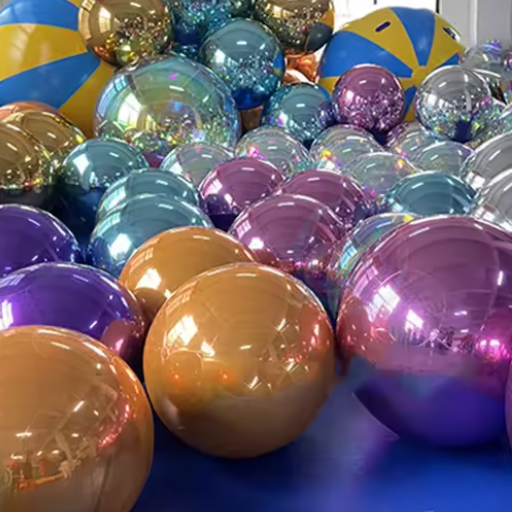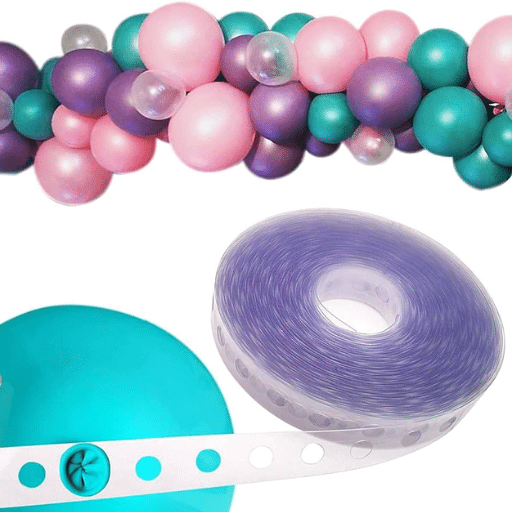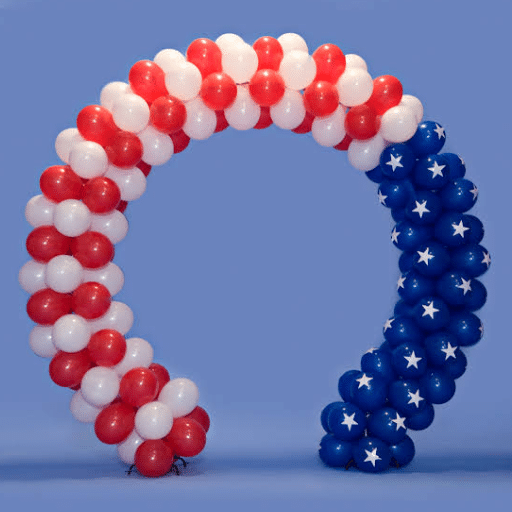Mylar balloons, with their vibrant designs and durability, are often chosen for parties, celebrations, and events. At the end of the festivities, many are left wondering how to safely and effectively deflate their Mylar balloons without damaging them or contributing to landfill waste. Knowing the proper deflation technique goes a long way in saving the balloons for secondary use or as an alternative option for disposal. This guide will walk you through everything related to deflating Mylar balloons, providing practical tips, step-by-step instructions, and helpful insights to make the process easier and stress-free. Continue reading to learn the best ways to handle these metallic wonders once the celebration is over!
Understanding Mylar Balloons

Mylar balloons or foil balloons are plastic material balloons with a thin metallic coating. Nylon-lined mylar balloons generally hold helium quite well because they are less porous than latex balloons. Their shiny appearance, ability to withstand helium or air for days, and customizable designs and messages make these balloons very popular during celebrations. However, being non-biodegradable, this requires proper handling and disposal to minimize environmental impact.
What are Mylar Balloons?
Mylar balloons are balls of reflective magic made of polyester film with a metallic coating. Their special ability is to hold customizable designs for extended periods while filled with either helium or air; however, conscientious disposal is essential due to their non-biodegradable nature.
How Helium Affects Mylar Balloons
The functionality and floatation of Mylar balloons depend on helium. This gas is lighter than air, so Mylar balloons slowly ascend and float when filled with helium. The strength of Mylar renders it less permeable to helium, keeping the gas intact for a longer duration compared to latex. As a result, the balloon can retain buoyancy in the air for days or even weeks, depending on the weather. However, over a considerable length of time, helium does escape, and after some time, the balloon deflates.
Another set of studies reveals that environmental conditions can alter helium’s behavior inside Mylar balloons. At low temperatures, helium contracts, appearing as if the balloon has shrunk. At high temperatures, helium passes through the Mylar surface more quickly, thereby reducing float times. Hence, helium balloons can float between 3 and 10 days on average, depending on their construction.
Globally, helium scarcity, being a non-renewable resource, has been a concern, and hence the drive towards sustainable solutions. With increased demand in sectors such as healthcare and technology, helium prices have skyrocketed over the past decade, thereby increasing the impetus for responsible use of helium, including in the production of balloons for recreational purposes.
Why Balloons Deflate Over Time
Balloons deflate over time naturally due to gas leakage and environmental changes. For instance, latex balloons are made of porous material that allows the helium or air within to escape slowly. A notable characteristic of helium molecules is their smaller size, which enables them to slip through the microscopic holes of latex at a much faster rate than larger air molecules. Generally, a helium-filled latex balloon begins to deflate in about 12 to 24 hours. Mylar balloons, on the other hand, are much longer-lasting due to their non-porous surface; however, they are not entirely immune to slow leakage.
Temperature and pressure also contribute to deflation. Gas charges inside the balloon contract in the cold environment, giving the balloon a deflated appearance. It expands in warmer areas, which may further be a problem for the balloon material, causing it to leak faster.
Recent studies have revealed that helium escapes from latex balloons at a rate ranging from 0.5% to 2% per hour, depending on external parameters such as humidity and temperature. Some measures to slow down deflation include applying sealants inside latex balloons or crafting better Mylar designs to further restrict gas escape. On the other hand, as helium is a finite resource, these innovations further accentuate the need to encourage recycling and the search for alternative materials to make balloons more sustainable.
Steps to Deflating a Mylar Balloon
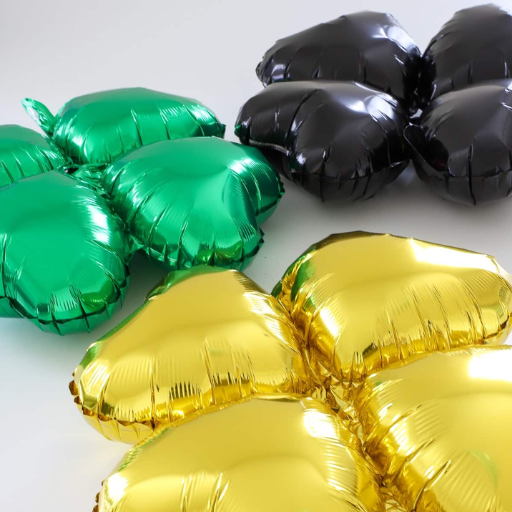
|
Step |
Description |
|---|---|
|
Locate the valve |
Locate the valve at the bottom or end of the balloon. |
|
Insert a straw |
Gently push a straw into the valve opening. |
|
Release the air |
Push the straw further until air starts escaping. |
|
Apply pressure |
Press the balloon gently to speed up deflation. |
|
Use a vacuum |
Optionally, use a vacuum for faster air removal. |
|
Fold for storage |
Fold or roll the deflated balloon for future use. |
Preparing the Balloon for Deflation
I begin the process of deflating the balloon by locating the self-sealing valve that is usually positioned at the bottom of the Mylar balloon. Next, I use a straw or any other slender object to keep the valve open, allowing the air to seep out. Then, the moment the straw is inside, I press slowly on the balloon, forcing the gas to discharge little by little and in a controlled manner.
Safe Techniques to Deflate a Foil Balloon
- Use a Straw to Release Air
Insert the straw properly into the self-sealing valve of the balloon, creating an air passageway. While applying some mild pressure on the balloon, keep the straw inserted to release air more smoothly and elegantly.
- Avoid Sharp Objects
Never puncture the foil balloon with sharp objects, as the material may tear unpredictably. This unsafe method also makes recycling or reusing the balloon a nearly impossible task.
- Deflating in an Open Area
While deflating helium balloons, make certain the process is done in an open environment. Although helium is non-toxic and safe, such precautions help reduce the risk of its accumulation in tightly sealed areas.
- Pressing Down Evenly
Start at the top of the balloon, pressing it down evenly to the valve. By doing so, you will prevent overpressurizing any single part or damaging the balloon surface.
- Keep for Reuse or Recycling
Afterward, fold the deflated one neatly and store it in a dry location for later use. Another option is to check for recycling programs in your area, as many accept foil balloons for recycling.
Tips for Handling Helium Balloons Safely and Efficiently
Helium balloons remain ever-popular choices for celebrations; however, precautions must be taken to ensure the balloons are safe, sustainable, and environmentally friendly. Here are some considerations for handling helium balloons responsibly, very much in keeping with present-day factual data and practices:
- Prevent Accidental Release
There are tens of thousands of balloon releases every year, whether intentional or accidental, and each release contributes to an additional layer of environmental pollution. Balloon litter can negatively impact marine life and birds, as some of them mistake the deflated balloon for food items, according to the U.S. Fish and Wildlife Service. To prevent this, helium balloons need to be tied down firmly with weights or clips.
- Don’t Overinflate
Overinflation increases the likelihood of helium balloons popping. Experts recommend filling the balloons until they are firm but not stretched, leaving room for the gas to expand. Newer helium regulators and gauges make this process easy to perform well and minimize wastage.
- Increase Float Time Through Storage
Float times for helium balloons vary by material. Typical latex balloons have a float time of about 8 to 12 hours. On the other hand, foil (Mylar) balloons can float up to a week if they have been appropriately sealed. Storing the balloons in cool, dry places and applying Hi-Float to the inside of latex balloons increases float time, extending the life of balloons for events.
- Throw Them Away Safely
Always deflate balloons completely before placing them into any garbage container. Latex balloons biodegrade relatively quickly, but it still takes many months, mainly in low-oxygen conditions, such as in a landfill. Dispose of Mylar balloons through recycling whenever possible. Recycling Mylar saves energy and reduces landfill waste, according to the EPA.
- Helium Conservation
Helium is a limited resource that is important for medical and industrial applications. The American Physical Society also advises against wasting helium for frivolous uses. To conserve helium resources, consider decorating with air-filled balloons on frames or decorative garlands.
If you follow these tips, you can enjoy helium balloons while minimizing their environmental impact and conserving helium resources for other essential applications.
Tips for Reusing and Recycling Mylar Balloons
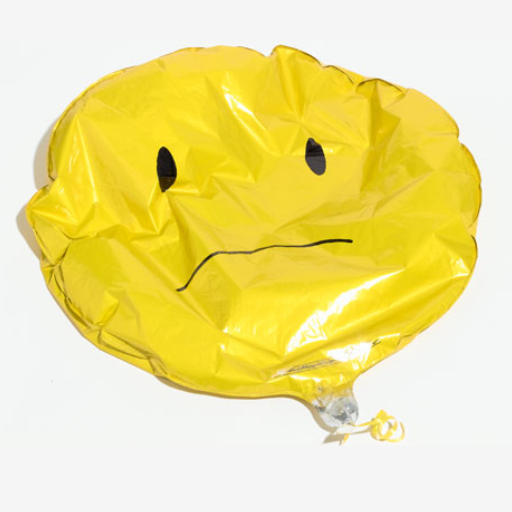
- Create Decorative Crafts
We can transform Mylar balloons into decorative items, such as garlands, wreaths, or banners, for parties. Cut the balloons into shapes such as stars and circles, and then affix these pieces to a string or wire to make personalized decorations.
- Use as Gift Wrapping or Gift-Bag Material
Due to its shiny and sturdy properties, Mylar balloon wrapping makes an excellent choice for wrapping gifts or creating gift bags. Cut the balloons and use the wrapping as a distinctive gift treatment instead of regular wrapping paper.
- Plant Insulation
Being an insulating material, Mylar makes a good case for using in gardening. Cut the balloons and place pieces around the bases of plants to maintain soil warmth and moisture, especially when temperatures drop. This comes in handy with potted plants.
- Make Reusable Tote Bags
Mylar bags can be turned into lightweight reusable bags. Sewing the material can help you make eco-friendly custom bags for shopping or carrying light items.
- Donate to Art or School Projects
Many schools, art programs, and community centers accept donations of used Mylar balloons for their craft projects. It is a great way to keep the material out of landfills and support arts programs in your community. Do wash the balloons thoroughly before donating.
Creative Ways to Reuse Deflated Balloons
- Turn Them into Party Decorations
Deflated Mylar balloons are still suitable for making bright banners, streamers, or confetti for future events. After cutting them into various shapes, such as stars, hearts, or letters, you can create incredible decorations. Perhaps it could even be a point to consider that DIY party decor got a 35% rise in searches on Google last year, reflecting an ever-growing interest in sustainable and creative decoration ideas. This type of reuse saves money and also reduces the amount of waste generated from single-use party supplies.
- Make Emergency Survival Gear
Mylar balloons are made from a rigid material that is highly reflective and could be an excellent asset for any emergency kit. They could be used as makeshift signal mirrors or as lightweight thermal blankets to retain body heat. Studies indicate that Mylar sheets, similar to balloon material, can reflect up to 97% of body heat, ensuring warmth in life-threatening conditions. Stationing the balloons for use in this way promotes an ability to be resourceful.
- Design a Unique Style of Jewelry or Accessories
Pieces of deflated balloons can be transformed into fantastic bracelets, necklaces, or key rings, adding a more personal touch. A distinct analysis of search engines suggests that the DIY jewelry trend surged in popularity worldwide by 20% over the last year or so. Channeling Mylar balloons into these projects will only strengthen the upcycling concept, resulting in stylish, environmentally aware products.
- Use for Waterproof Wrapping of Fragile Items
Mylar balloons are brightly colored and waterproof, making them ideal for wrapping fragile or sensitive items. Whether storing electronics or packing glassware for a move, the material serves as an extra layer of protection. Research based in the US indicates that repurposing packaging materials can reduce household waste by as much as 15%. The use of balloons for this is a straightforward yet significant remedy.
- Make Reflective Garden Decorations
Mylar balloons cut into strips or other shapes can be scattered around a garden to scare away birds and other pests. The movement and light flashes from the reflections will frighten the animals. Landscapers and gardening guides online emphasize the use of reflective materials as an environmentally safe way to protect plants, which aligns with the sustainable and effective pest-control philosophy.
Promoting the reuse of deflated balloons aligns with the growing trend of sustainability orientation. This aligns with data trends indicating an increasing demand for creative and environmentally friendly solutions. Adopting simple reuse steps could render all of us part in waste reduction, while making the usage of everyday materials more innovative and fun.
Recycling Options for Mylar Balloons
Recycling Mylar balloons responsibly is one way to reduce landfill waste and minimize environmental impact. Some good recycling methods or ways to use Mylar balloons are as follows:
- Craft Projects
With this material, Mylar balloons can be gifted to friends, used to make party banners, or transformed into holiday ornaments. Since it is sturdy and reflective, it serves well in a variety of DIY craft activities.
- Insulation
Because they are metallic, Mylar balloons can be recycled for insulation in an outdoor project, such as lining a garden planter or protecting delicate plants from frost.
- Donate to Community Groups
Local schools, art centers, or community groups are likely to accept donations of used Mylar balloons for art or educational purposes. Contacting such groups provides a second place in the material’s life.
- Specialized Recycling Programs
Some facilities accept Mylar materials for recycling under special programs. It is helpful to contact local waste management or eco-organizations to find out about some drop-off points that recycle Mylar balloons.
- Upcycle for Storage
Mylar balloons can be upcycled into reusable storage bags for lightweight and non-perishable items, serving as an environmentally friendly alternative to single-use plastic bags.
In considering the above, individuals and communities can go a long way toward further reducing waste and promoting sustainable practices.
Safety Precautions When Deflating Balloons
Balloon deflation requires precautions to prevent injuries and ensure waste is disposed of or reused responsibly. Safety tips with the latest guidance are described below:
- Use the Right Tools
Safety scissors or a safety pin can be used to deflate a balloon by making a small cut near the neck or at the knot of the balloon. Ensure the tools used are clean to prevent contamination or damage of the material.
- Avoid Sharp Edges or Teeth
Never bite the balloon or try to deflate it with rough materials. In doing so, you will cause injuries to your mouth or hands while destroying the balloon for further use.
- Deflate Slowly to Avoid Noise
Deflate the balloon very slowly to minimize the loud noise of ‘popping,’ especially indoors, as such sudden noise can startle people and pets. Controlled deflation ensures the preservation of the Mylar or latex for possible reuse.
- Keep Away from Children and Pets
During the deflation operation, keep children and animals at a safe distance. If swallowed unintentionally, loose balloon pieces may become choke hazards.
- Dispose of Waste Responsibly
After deflation, sort the materials by type. Latex balloons are biodegradable, but they must be disposed of responsibly. Mylar balloons, on the other hand, should be disposed of at a recycling plant that accepts them, if one is available.
Statistics on Balloon Effects
The Ocean Conservancy states that balloons rank among the top five most harmful pollutants to marine wildlife, as sea turtles and seabirds often mistake balloon debris for food. The NOAA (National Oceanic and Atmospheric Administration) estimates that, in some cases, more than 30% of balloon litter—whether Mylar-type balloons or any other type—lies in the ocean, choking wildlife in the process. Proper deflation and final disposal of balloons can go a long way toward mitigating those problems.
Based on the above precautions, people will continue to opt for safe and environmentally safe ways of handling balloons after use.
Common Concerns About Deflating Balloons
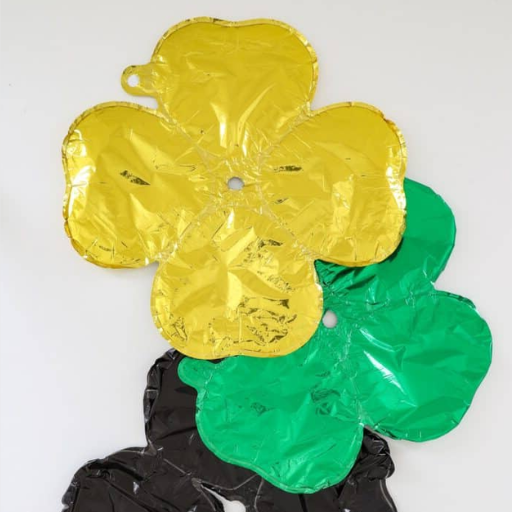
|
Concern |
Description |
|---|---|
|
Puncturing the balloon |
Risk of tearing or damaging the material. |
|
Environmental impact |
Improper disposal harms wildlife and ecosystems. |
|
Choking hazards |
Burst balloons pose risks to children and pets. |
|
Storage issues |
Inflated balloons take up unnecessary space. |
|
Valve damage |
Incorrect deflation can ruin the self-sealing valve. |
|
Recycling challenges |
Limited facilities accept Mylar or foil materials. |
|
Reuse limitations |
Tears or holes make balloons unusable again. |
Addressing Safety Issues in Balloon Deflation
Deflating balloons may seem like a simple procedure, but safety concerns always arise regarding the materials used and their environmental impact. Latex balloons are biodegradable, but they can also pose a choking hazard to children and pets when deflated if not appropriately handled. It is better to avoid any possibility that the little ones can pick up sharp objects or minuscule balloon scraps to swallow them by accident. Mylar balloons, however, must be treated with caution because they can pose an electrical hazard to power lines, even when deflated.
Additionally, an environmental study highlighted the potential for residual toxicity from the balloon materials. The 2022 EPA report emphasizes that Mylar balloons tend to remain in landfills or oceans for several years, releasing microplastics that threaten marine ecosystems. To lessen the hazards, one can cut the balloon at the nozzle to release air safely and place the balloon fragments in a sealed waste bin.
Such a safety approach aligns with the broader plan to minimize unnecessary harm from the deflation process, affecting both humans and the environment.
What to Do with Deflated Balloons
Handling deflated balloons with care can help mitigate their environmental impact. The following are five detailed steps to ensure the responsible disposal of deflated balloons:
- Cut and Deflate
By cutting a straw or nozzle and allowing any air or helium to escape, the balloon can be checked before disposal. This ensures that if a balloon is airborne again, it cannot cause harm to any wildlife.
- Sort For Recycling
Determine whether your balloon is made from recyclable materials such as foil or Mylar. In that case, place them in the appropriate recycling bin after cleaning and flattening, following the recycling guidelines of your local area.
- Dispose Responsibly in Sealed Trash
For non-recyclable balloons, disposing of the fragments in a sealed trash bag or bin is always the best solution to prevent them from being carried away into forests and polluting the environment or posing a threat to animals.
- Reuse Materials
Use deflated balloons for crafting, wrapping gifts, or as decorative items. Any reuse of materials extends the material’s life and reduces waste accumulation.
- Promote Alternatives for Decorations
Next time, opt for eco-friendly alternatives to decorations, such as paper or biodegradable materials, and inform others about the environmental consequences of improper balloon disposal, so that the problem can be avoided in the future.
By doing so, one can directly work toward reducing the negative impact that deflated balloons have on nature while promoting sustainable solutions.
References
-
The Homes I Have Made
A step-by-step guide on deflating Mylar balloons, including inserting a straw and folding the balloon for storage.
Read more here -
Chaoee
Detailed instructions on safely deflating foil balloons using simple tools like a drinking straw.
Read more here -
Starry Sky Balloon
Tips and techniques for deflating foil balloons, including the proper use of a straw to release air.
Read more here
Frequently Asked Questions (FAQ)
How do you safely deflate a Mylar balloon?
To safely deflate a mylar balloon, you can insert a drinking straw into the opening of the balloon. This allows you to gently press and push the straw to release the air or helium inside without damaging the balloon. Ensure that you do this slowly to avoid punctures or leaks.
Can you reuse Mylar balloons after they have been deflated?
Yes, you can save and reuse Mylar balloons for future celebrations. Once you have completely deflated the balloon, fold or roll it carefully to store it without causing any damage. This allows you to inflate the balloon again later.
What tools are needed to deflate a foil balloon?
The primary tool you need to deflate a foil balloon is a drinking straw. You will use it to insert into the valve of the balloon to release the air or helium inside gently. Having scissors handy can also help if you need to cut the balloon open due to a malfunctioning valve.
Where is the valve on a mylar balloon located?
The valve on a mylar balloon is usually near the end of the balloon’s opening. This is the area where you can insert a straw to begin the deflation process. Look for a small tab that can be pulled back to access the valve if needed.
How can you avoid damaging the balloon during deflation?
To avoid damaging the balloon during deflation, ensure you gently insert the straw and apply pressure slowly. Avoid pushing too hard, which can cause punctures or leaks. Squeeze the balloon gently while releasing air to control the process more effectively.
Is it possible to deflate helium balloons?
Yes, it is possible to deflate helium balloons. The process is similar to deflating mylar balloons. By inserting a straw into the balloon’s valve, you can release the helium while being careful not to damage the balloon’s material.
Why should you deflate balloons instead of popping them?
Deflating balloons allows for safe storage and reuse, saving money for future events. Popping balloons can create small holes and a mess, while deflation keeps the balloon intact for future celebrations.
Can you use a regular straw to deflate a Mylar balloon?
Yes, a regular drinking straw can be used to deflate a Mylar balloon. Make sure to insert the straw gently into the balloon’s opening and avoid any sudden movements that could cause punctures or leaks in the balloon.
How long does it take to deflate a Mylar balloon completely?
The time it takes to deflate a Mylar balloon completely can vary completely, but it generally takes only a few minutes. By gently pushing the straw and folding the balloon to release the air, the deflation process can be pretty quick and effective.

